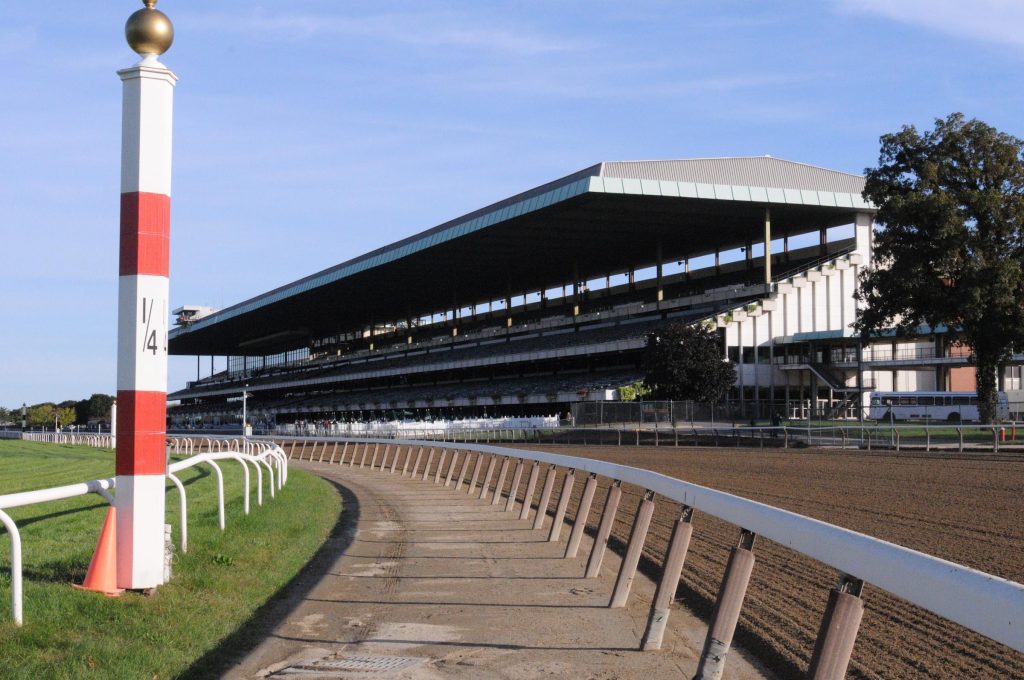
In case you had not heard: the now, 1 mile 1/8th Belmont Stakes is on—June 20; plus, a 25-day schedule is off and running at Big Sandy near Elmont, New York.
The New York Racing Association (NYRA) and NBC Sports will pair to bring us what becomes the first leg of the Triple Crown. In a COVID-19 diaspora that is both forced and voluntary, horse racing has positioned itself in the middle ground.
Since its stage is so large and contact can be kept to a minimum, participants can watch from afar, safely. That does not mean the sport has not been affected. To be sure, racetrack employees from the bartenders to the window operators, along with thousands of backstretch workers who happened to be at locations that were forced to close or could not open were economically punished.
Most are optimistic that brighter days are ahead.
From the fan perspective, horse racing continues to struggle to gain new segments of the population. Industry leaders and turf writers are burning up the keys through op-eds, crowing for the sport to take advantage of the moment by expanding its marketing reach and potential. In April, handle was strong, but that does not necessarily mean that neophytes to the sport will remain.
Ageing membership that cannot attend simulcast facilities, since they have been shuttered, are forced to find other means to wager and socialize. That is the trouble with moving to a totally online platform, if your state allows it. Wagering becomes an isolating experience. The tradeoff becomes ease versus the sacrificing of socializing.
This will be even more pronounced during live racing, since spectators will not be allowed to attend.
The impact of not having those voices is immense.
Clamor from the railbirds and the grandstand makes a race, whether you are watching it live or on television.
Right now, several professional sports (including the NFL) are thinking broadly about how they will operate without folks in seats. Also, many of the networks (FOX) are discussing the possibility of piping in the murmurs and huzzahs that accompany action, in order to make the experience for the players and those watching a broadcast more normal. If you have caught some of the golf, NASCAR or any other events during COVID-19, there is an especially eerie ghost town feel when the cameras are pulled back.
Daniel Weigand, Sport Psychology Professor at the University of Western States near Portland, Oregon agrees. “If you watch German soccer or Korean baseball, you’ll know how much the lack of crowd noise makes it much less fun to watch.” Afterall, the joy is why we tune in, isn’t it?
He believes that crowd noise can be very useful for athletes, but he is unsure how it would impact the horses that are running around the track. As he states, “We normally discuss this in terms of the home-field advantage because it may give athletes a boost, either to “show off” in front of home fans or to “show-up” away fans.”
Still, we know that “horses-for-the-course” exist and for that matter they are athletes—loving to run; that much is true.
Speaking of the power of noise, Dan Wann, Professor of Psychology at Murray State University in Kentucky, specializes in the effects of crowds across sport. When it comes to the din of a live audience, he believes that, “Piping in noise may seem strange, at least at first. Not unlike when sitcoms started using laugh tracks several decades ago.”
But he acknowledges that the silence may be equally problematic. “If you mix the sound of fans and the visual of no fans, that might seem especially odd,” according to his research. That is where track announcers come in—those voices that provide texture and color. Background assists for traditional simulcast. It can fill the air when fans who are watching at home cannot hear the hooves beating after the break.
In his experience, enthusiastic viewers have the vast majority of their concentration devoted to the announcer (for audio stimulation) and honed in on the horses themselves (for visual stimulation); so, it’s also possible that, from the television spectator’s perspective, it may be ephemeral.
Wann thinks, “Humans have a limited cognitive capacity and can only focus on and pay attention to so many things at once. With so much of their attention devoted to the call and to the race itself, it’s possible that they wouldn’t notice the sound anyway.”
As for the horses themselves, we know that they are very aware of the fans/spectators at events.
Much was made last year during the Kentucky Derby when the leader, Maximum Security, turned for home and was supposedly “spooked” by cameras and fans who were positioned near the inside rail at the turn.
Given this, Wann would argue that from what we know from sport and social psychology, a lack of spectators will most likely have an impact. “Based on Social Facilitation Theory,” he says, “one could certainly contend that, since the horses and riders are very good at what they do, the fans in attendance should improve their performance; the opposite would be expected of horses who were not trained or not trained well enough.”
In other words, if you remove the fans, you could potentially get a decreased performance and thus slower times. This would be interesting to examine from a statistical point of view for the month of April, since the majority of the tracks (including Tampa Bay Downs, Gulfstream, Will Rogers, Fonner, and Oaklawn Parks) ran regularly without spectators. Were speeds slower?
Still, Wann maintains that because there are other horses and riders participating, perhaps it will be sufficient to lead to social facilitation (i.e., the improvement of performance in front of others). So, maybe no real decline occurred.
In the meantime, NBC Sports should consider the potential to test fan viewership and experience as the Belmont Stakes approaches.
They were fairly progressive when it came to the broadcast of the “Triple Crown Showdown,” and testing the ideas implicit behind virtual racing. The context of the event wasn’t framed as seriously as it could have been, but if you watch the replay, you will notice how important the crowd noise was as Secretariat bolted to the lead down the stretch and overpowered the celebrated field. Having Larry Collmus “live call” the race was also a nice touch. Lessons from the virtual race would go a long way to informing about how to proceed as Belmont looms.
Taking a page out of Social Facilitation Theory, if networks will continue to innovate in the wake of COVID-19, there is potential for improvement and the incorporation of new ideas when it comes to attracting new fans and engaging old ones.
Belmont has a long history of attracting attention. I cannot imagine Secretariat’s blowout win, Affirmed’s duel with Alydar, or American Pharoah’s long-awaited ride into history without the din of the masses.
That is the power of the crowd when drama afoot. Live or manufactured, it matters. Wouldn’t you agree?


